Line Magnetic LM-88IA, LM-150IA, LM-845IA, LM-805IA and LM-845 Premium – part 3
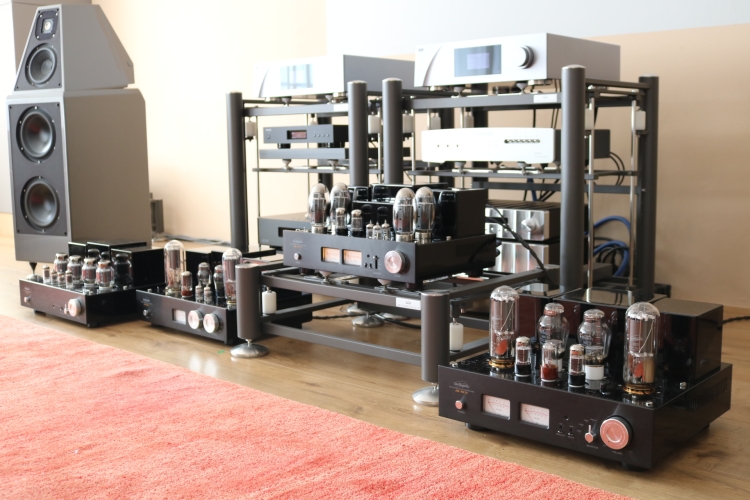
Line Magnetic with Wilson speakers
Having obtained excellent results with the Gustavsons it was now time to move to the main audio system and to see how the Line Magnetic amplifiers performed with the Wilson Watt/Puppy 8’s. Since I changed to a CH Precision audio system, this setup no longer contains an analog preamplifier. The CH Precision C1 is a streaming endpoint, DAC and digital controller in one and because it uses a smart volume control (part digital, part analog) and sounds utterly refined on its own, I can use it directly with the A1 power amplifier. This means that the Line Magnetic integrated amplifiers’ preamplifier stages cannot really be compared to anything else using this system. Because the A1 amplifier is my reference and the C1 together with the Melco N1ZH and Antipodes EX form my reference front end, I opted to use all the Line Magnetic amps in power amplifier mode, via their “pre-in” inputs, bypassing their built-in preamplifier sections.
The Wilsons speakers reportedly have a slightly challenging impedance curve in the lower frequencies but from earlier experiences with various tube amplifiers, SET included, I already knew that despite this, they are pretty easy to drive, in part thanks to their high sensitivity. And as the following tests would show, this was indeed no issue.
In my experience, transistors will usually have better bass and they usually sound more even-handed, but otherwise, I’ve had to admit on more than one occasion that the tube amp had the upper hand. Given the right circumstances (speaker pairing and room interactions) a medium-power tube amplifier can not only deliver a subjectively more emotionally engaging sound but can actually sound more lively and dynamic than even a very high power transistor amp. The CH Precision A1 uses transistors, but it is no ordinary transistor amp and it has an out-of-this-world price tag to match. Please bear this in mind when I make the odd comparison between it and a Line Magnetic amp.
Line Magnetic LM-150IA as a power amp
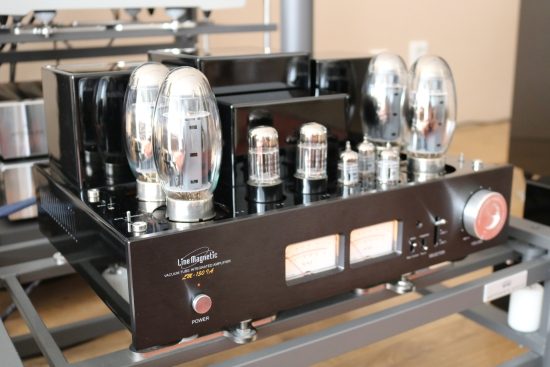
Because my most recent experiences in this setup were done using Push-Pull designs such as the ARC Ref75SE (KT-150) and PrimaLuna DiaLogue Premium (EL-34 and KT-150), the logical starting point for me with this system was the LM-150IA. Right from the start, the amp sounded very powerful, spacious and engaging. While it was arguably a little bit too controlled with the very efficient Gustavsons, clearly the Wilsons allowed it to let the juices flow freely, making for a well-balanced sound with good speed and dynamics, as well as a rich and free-flowing midrange. With the Wilsons, too, this amp’s timbre is impeccably natural and I recognized the KT-150 neutrality and even-handedness from earlier experiences with the ARC Ref75SE. From memory, the latter may be a little bit more refined and transparent but it definitely does not come close to producing the bass heft of the LM-150IA. This may well be the most solid-sounding tube amp that I have heard in these quarters so far!
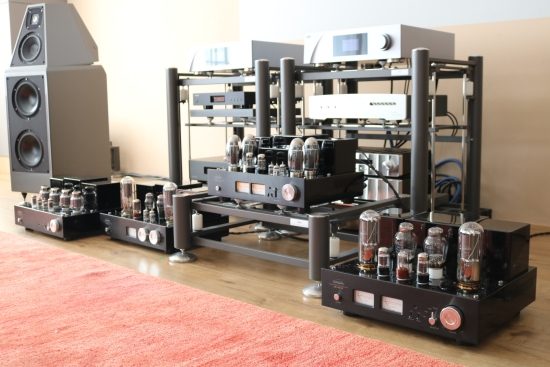
Compared with the PrimaLuna Dialogue Premium
Regardless of the tubes in it, unless driving very inefficient speakers, I always prefer to use the PrimaLuna DiaLogue Premium amp in Triode mode (rather than UltraLinear) and for this review that was no different. To make for a fair comparison, I fitted the Tung-Sol KT-150 tubes in place of the EL-34’s that I normally use with this amp. Compared with the Line Magnetic LM-150IA, the PrimaLuna seemed to finally have found its match in terms of bass solidity and overall sense of power. It’s weird, but except for the ridiculously powerful ARC VT200, no other tube amp has managed to sound more powerful than this little power-lifter of an amp. This is admittedly one of the PrimaLuna amp’s strongest points: with its 36 watts in UltraLinear mode it even drives the power-hungry Apogee Duettas surprisingly effectively. Even though the PrimaLuna amp with KT-150’s in Triode mode offers only a fraction of the LM-150IA’s 100-watt power, you don’t really notice this with the relatively sensitive Wilsons. As it would turn out later, you definitely do notice this with the Apogees, but more on that later.
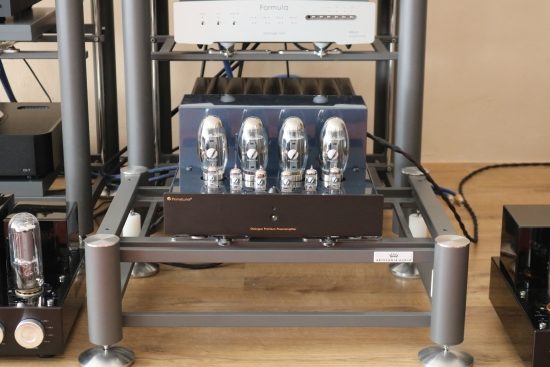
But apart from the sense of bass heft and overall power, these two amps are not much alike at all. The PrimaLuna has a more sonorous and solid, more “wooden” midrange, it has a kind of extra solidity in the same way that Wadia DACs, and, more recently, a lot of PS Audio electronics sound. This makes the amp sound very bold and extra convincing, especially with percussion. However, as noted before, the PrimaLuna, for all its pleasant boldness, is also a little rough. Let’s say that refinement is not its strong suit and neither is imaging and soundstage layering. The Line Magnetic, however, performs splendidly in these aspects, while still sounding very solid and very powerful.
The PrimaLuna was originally designed to work with EL-34 tubes and in my experience, it sounds most balanced that way and I figured it fair to also compare it with the LM-150IA that way. After removing the KT-150’s and re-installing the EL-34’s, indeed the amp sounds considerably gentler. Its sound was still pretty solid, but now more fluid and refined. But regardless, the LM-150IA is still a lot more refined, with more extended and airier treble and a deeper soundstage with much more distinct imaging and layering. There is no way around it I’m afraid: the LM-150IA is quite simply the better amp. Naturally, one would also expect it to be for the extra cash. But then consider that it has a lot more power, throws in power meters and a superb preamp section and has an exterior built to a considerably higher standard.
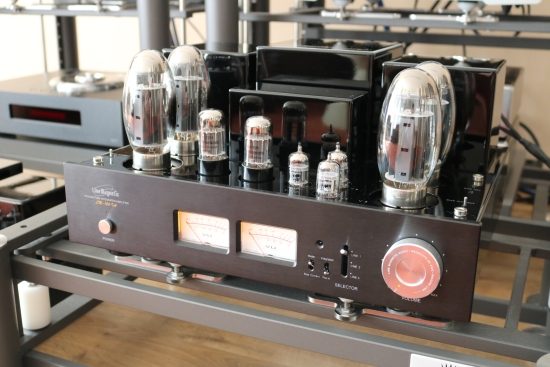
While the Line Magnetic amp did not reach the CH Precision A1’s insane level of refinement, transparency and low-level detailing, it sure made for a powerful and unfailingly engaging listen. And as it would turn out later with the Apogees (wait for it…) there was still more to come. As much fun as it was with the Wilsons, I definitely had not yet heard the best from this amplifier.
Line Magnetic LM-88IA as a power amp
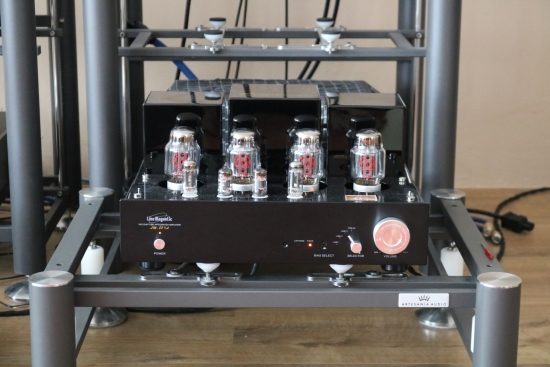
The LM-88IA immediately sounded considerably creamier than the LM-150IA. It does not have a more powerful bass but it is balanced differently with a warmer, more relaxed midrange, arguably making the bass stand out more. Its 45 watts were easily enough to drive the Wilsons as loudly as I wanted to and because it had such a smooth delivery, it was tempting to play louder than I normally do.
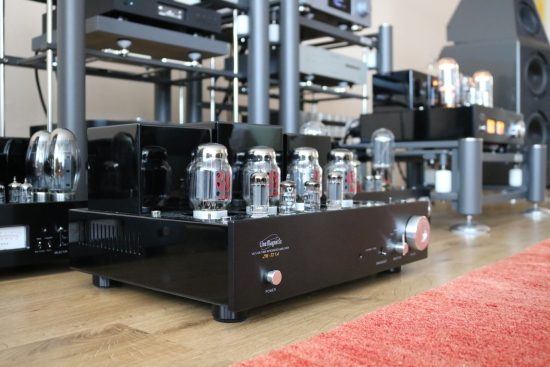
Compared to the LM-150IA, the LM-88IA does not have the linear behavior that I am more and more linking to the KT-150 tube. Nevertheless, it had excellent PRAT, speed, and dynamics: it’s not a slow sounding amp at all. Still, it could be argued that the LM-88IA has more of a “traditional” tube sound. While the LM-150IA comes closer to the neutrality of the CH Precision A1, I can imagine people preferring the LM-88IA, precisely for its more easy-going sound.
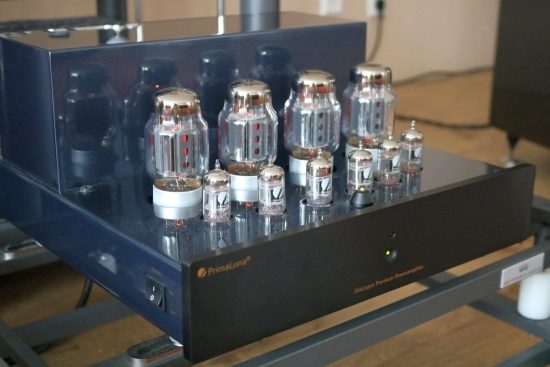
I also tried the Line Magnetic’s Shuguang KT-88’s in the PrimaLuna and although this made the amp sound significantly fuller and smoother, its bolder and rougher nature still shone through. This further proves the point that tubes in and of themselves are only partially responsible for an amplifier’s sound and in this case, the Line Magnetic LM-88IA’s character is clearly indeed the result of its design more so than of the choice of tubes.
In spite of the gained smoothness with these tubes, I still prefer the amp with its stock EL-34’s.
Line Magnetic LM-845IA as a power amp
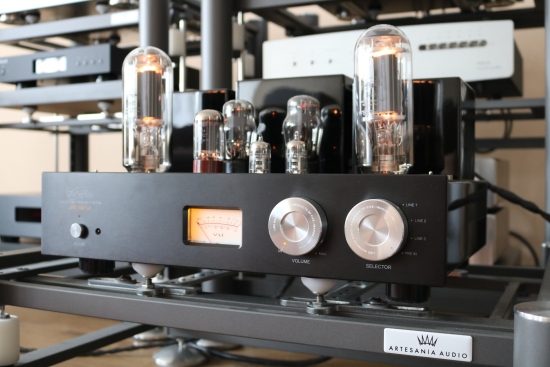
When connecting the LM-845IA, I wondered if this 22-watt amp would still sound as powerful with the Wilsons as it did with the Gustavsons. I needn’t have worried. This amp sounded more like the LM-150IA but a lot purer and cleaner, yet in a good manner, not at all clinical, more akin to the CH A1, in fact, but even more “alive” and definitely more free-flowing. Tubes tend to sound warm, you say? Well, not here! The LM-845IA’s sound is very open and very transparent and arguably closer to the CH Precision than the LM-150IA, except in terms of absolute power and bass impact. The midrange is nicely open and neutral and perhaps a smidgeon too forward for some tastes. For me though, it’s spot-on and nicely spicey and communicative. Its bass is indeed less voluptuous and has less impact but is actually very tight and articulate. It dawned on me that while this amp has only 22 watts and does not have CH-level bass or dynamics, it actually comes across as more natural and more lively than most more powerful amps, the CH included. Such is the allure of SET! With this amp, nothing is hyped, everything oh-so-pure and at times pure magic, especially with acoustical instruments and voices. The only times that I was less charmed by this amp was when playing R&B or other (electronic) music that relies mostly on the bass drive rather than melodies. That’s only fair, I guess, as 22 watts only takes you so far, and while SETs can certainly produce a magical sound, they are no magicians. For these kinds of music, either of the Push-Pull amps was more satisfying.
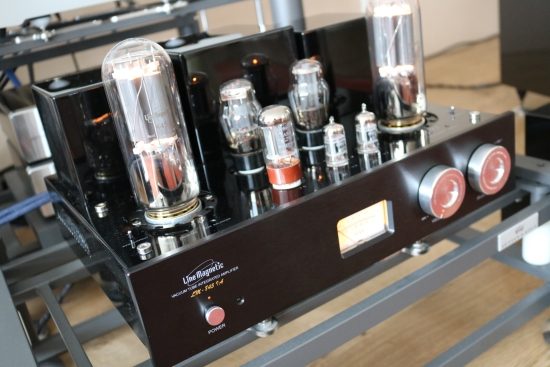
Line Magnetic LM-805IA as a power amp
Just as with the Gustavsons, the LM-805IA was considerably smoother and more relaxed than the LM-845IA, irrespective of the Negative Feedback setting. This is not to say that the adjustment was not audible, it sure was. But even at the maximum Feedback setting, the LM-805IA was still a lot smoother than its smaller brother. It was with its highest setting indeed that I preferred it with the Wilsons for with these speakers, it was perhaps more audible that this amp is indeed quite relaxed. It has most of the SET benefits of its smaller brother but its midbass is perhaps a little bit too rich, making the amp sound just a tick less articulate and immediate. Then again, the advantages are that this amp never becomes offensive, no matter the source material and no matter how loudly you play. The rich timbres and luxuriousness of the LM-805IA’s delivery are definitely addictive and easy to get accustomed to as well, as switching back to the LM-845IA made the latter sound a little gray in comparison.
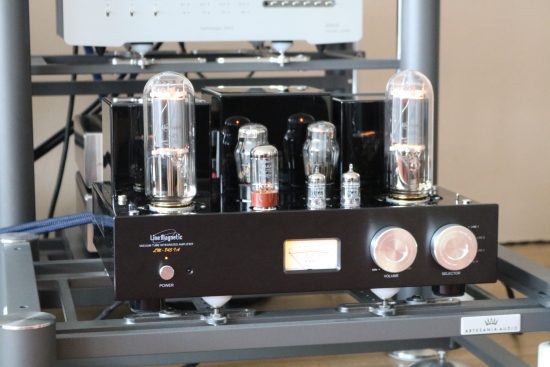
Part 2 – Review using Gustavson speakers
Part 3 – Review using Wilson speakers
Part 4 – Review using Duetta Signature speakers
Part 5 – LM-845 Premium and Conclusion
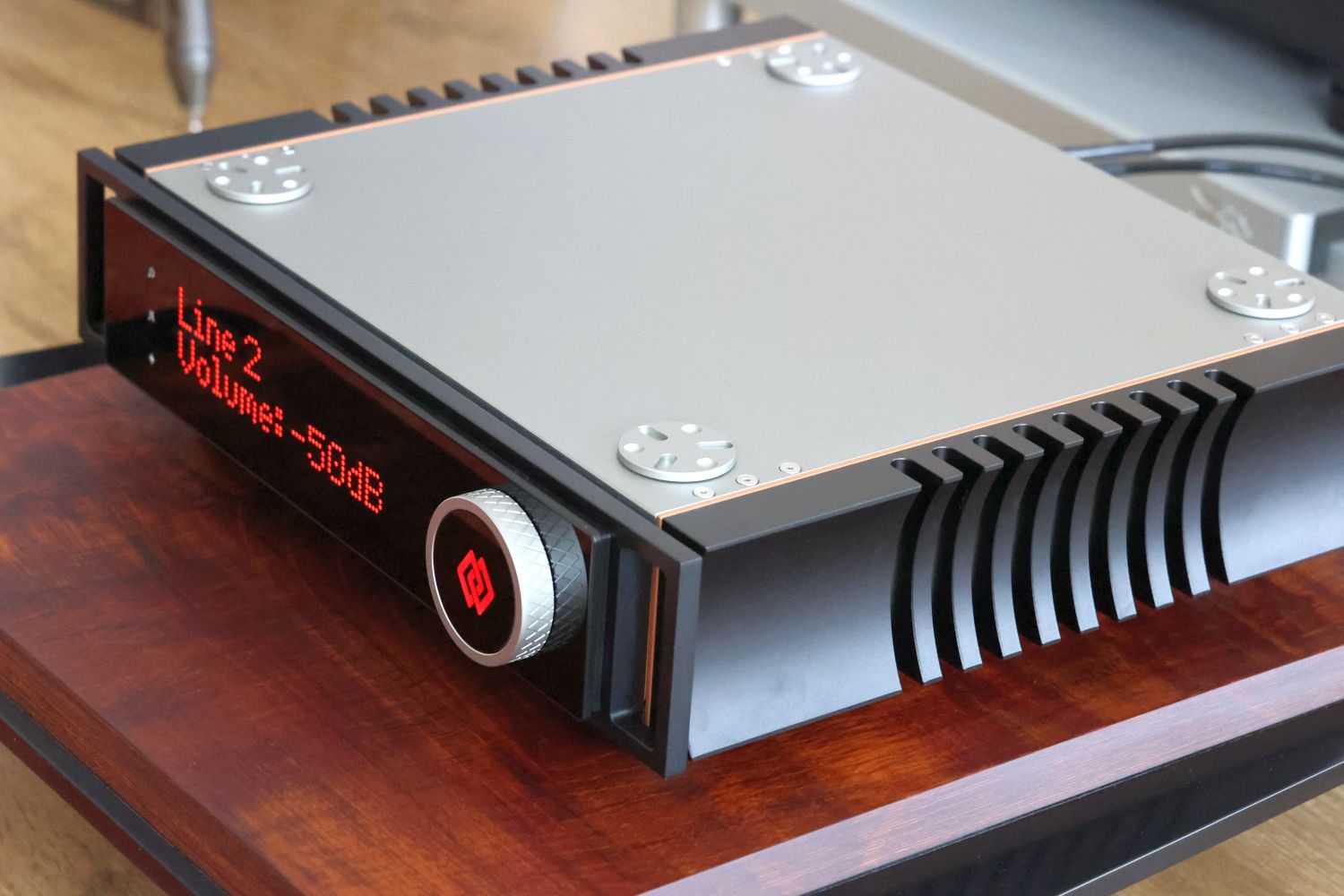
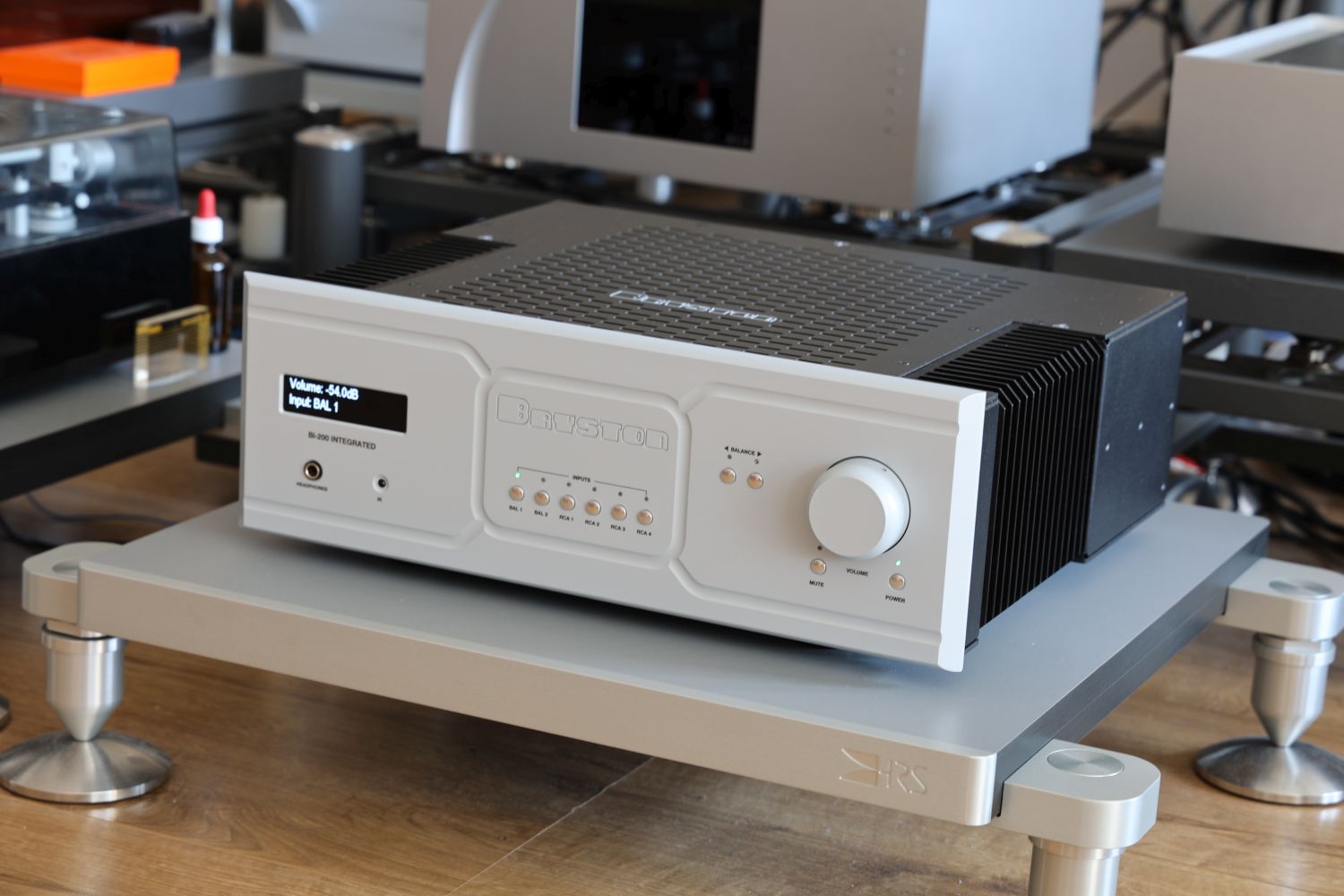
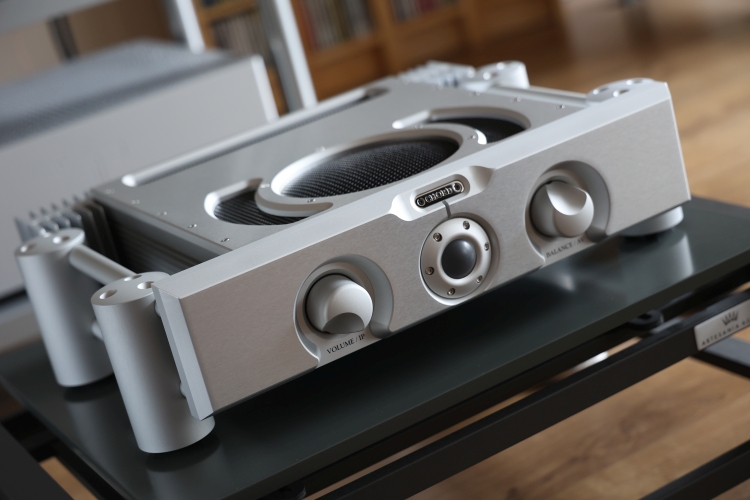
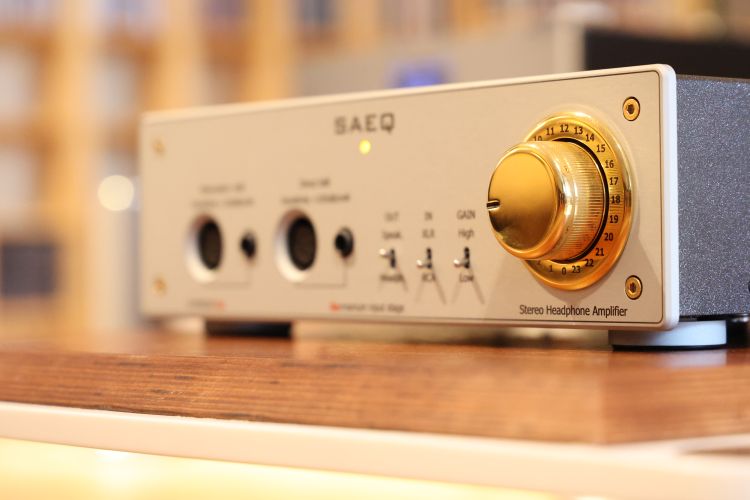
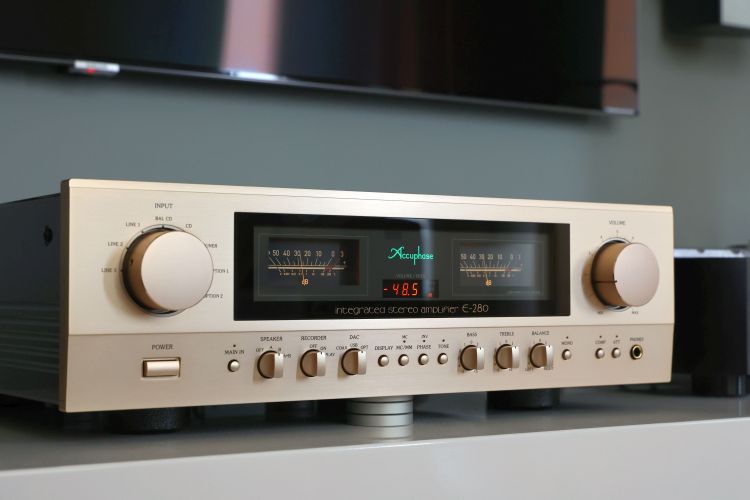
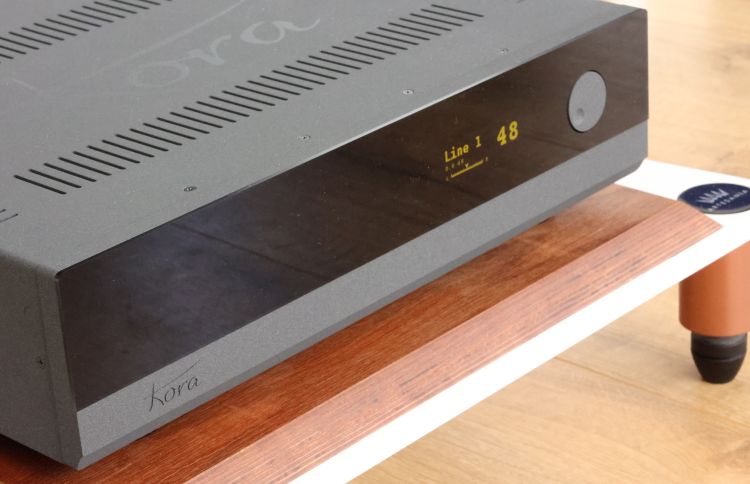
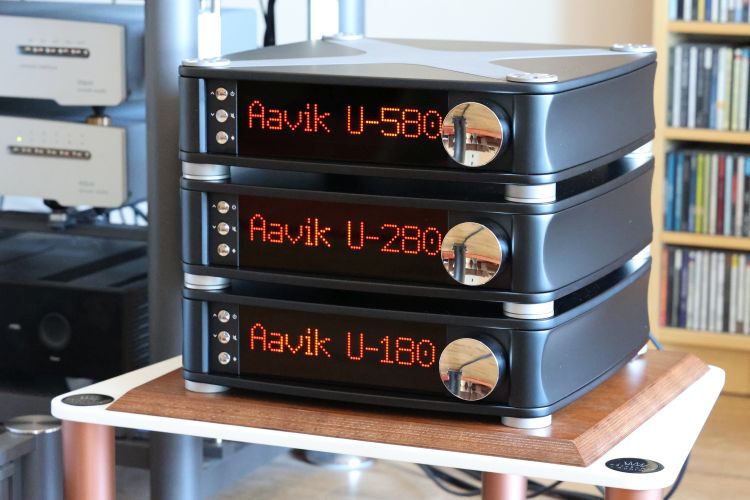
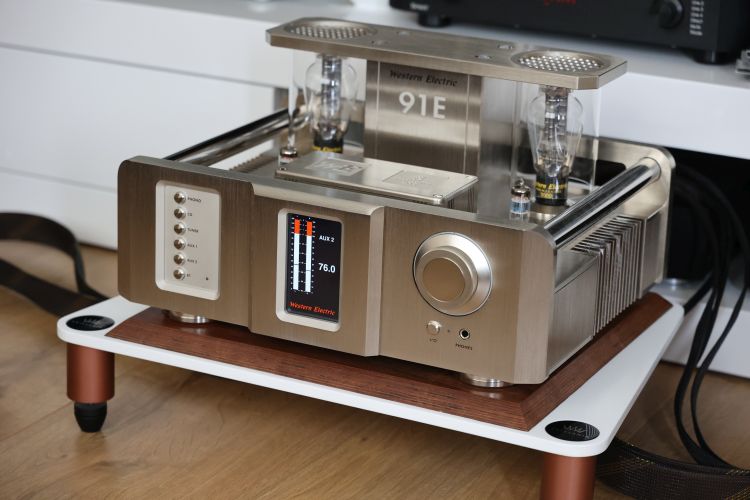
I am using LM 150ia with Focal-JMLAB Mezzo Utopia with 4ohm 91db sensitivity. Mezzos are power-hungry speakers and 150ia do make Mezzos sing so much lively. From soundtracks to rock and blues recordings, small orchestras to jazz trios, it is capable of amplify any kind of music with great dynamism and energy. For excelling transparency and 3d capacity, I would recommend users to change pre tubes with NOS ones. Lots of choices of 12ax7, 5571, 6sn7 out there. I am using Brimar cv492 in V1 and Ken-Rad VT231 black glass in driver stage. Brimar: Better details, better instrument seperation, deeper soundstage, live and smooth vocals. KR: Wider soundstage, creamy vocals and immense bass kick which is nice at low levels though excessive in some recordings in high level demos. This is a great powerful all-rounder tube amp with a nice pre-stage providing many nos configurations.